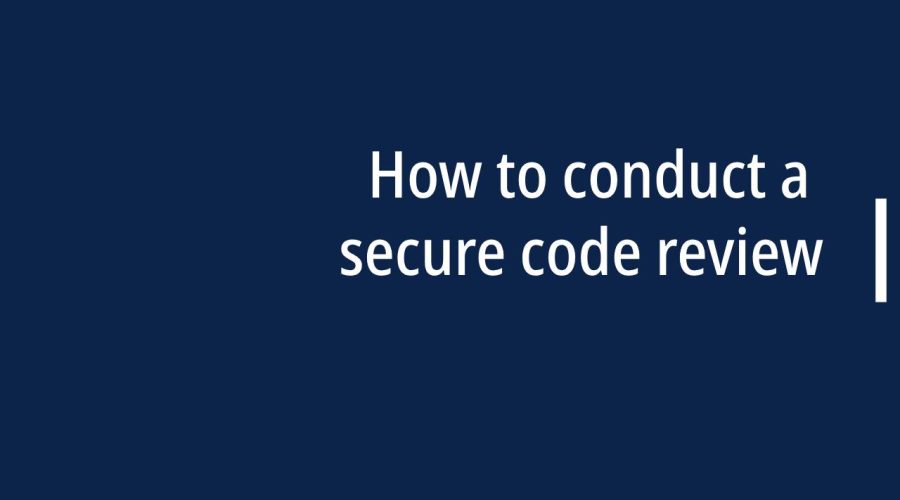Cyber threats continue to evolve, making it essential for organizations to employ comprehensive security measures. Secure code reviews are a crucial aspect of this strategy. In this in-depth guide, we’ll explore how to conduct a secure code review effectively, emphasizing the importance of safeguarding your software against vulnerabilities and cyberattacks.
The Significance of Secure Code Reviews
A secure code review is a methodical and disciplined examination of source code to identify vulnerabilities, weaknesses, and potential security risks. This process provides numerous benefits:
- Vulnerability Identification: Secure code reviews help uncover vulnerabilities early in the development process, reducing the likelihood of costly post-release fixes.
- Enhanced Code Quality: Identifying and rectifying issues improves code quality, making it more robust and maintainable.
- Compliance and Regulation Adherence: Code reviews ensure that applications comply with security standards and regulatory requirements, such as GDPR or HIPAA.
- Reduced Security Incidents: By addressing vulnerabilities in the code, the likelihood of security incidents, data breaches, and compromises is significantly reduced.
- Cost Savings: Detecting and resolving security issues in the development phase is far more cost-effective than addressing them post-production.
Step-by-Step Guide to Conducting a Secure Code Review
Let’s delve into the step-by-step process for conducting a secure code review:
1. Define Objectives and Scope
Before initiating a code review, establish clear objectives and scope. Define what you’re reviewing, whether it’s a specific module, feature, or the entire codebase. Decide which aspects of security you’re focusing on, such as authentication, data handling, or compliance with security standards.
2. Assemble a Review Team
An effective code review requires a diverse team, including:
- Developers: Familiar with the codebase and responsible for implementing fixes.
- Security Experts: Proficient in identifying security vulnerabilities.
- Quality Assurance Professionals: Skilled in testing and validation.
A multidisciplinary team can provide a holistic perspective.
3. Select the Right Tools
Choose appropriate tools to aid in the review process. Static analysis tools, like Checkmarx, Fortify, and Veracode, can automatically detect common vulnerabilities, saving time and ensuring comprehensive coverage. These tools can assist in the identification of issues like SQL injection, XSS, and security misconfigurations.
4. Understand the Codebase
Before you start reviewing the code, take time to comprehend the architecture, design, and functionality of the software. It’s challenging to spot security vulnerabilities without a thorough understanding of the code’s context. Documentation, architectural diagrams, and discussions with the development team can be valuable resources.
5. Create Code Review Guidelines
Develop a set of code review guidelines specific to your organization’s needs. These guidelines should encompass coding standards, best practices, and a security checklist. Share these guidelines with the review team to ensure a uniform approach.
6. Review Code Line by Line
Perform a meticulous line-by-line review of the code, focusing on sections with a higher probability of security issues. These areas include user input handling, authentication mechanisms, data storage and retrieval, and network communication. Look for vulnerabilities, insecure coding patterns, and deviations from coding standards.
7. Check for OWASP Top Ten Vulnerabilities
Refer to the OWASP Top Ten list, which outlines the ten most critical web application security risks. Ensure that your code review addresses these vulnerabilities, including issues like SQL injection, XSS, and security misconfigurations.
8. Assess Data Handling and Validation
Evaluate how data is handled, validated, and sanitized in the code. Pay close attention to input validation, output encoding, and the secure handling of sensitive data, such as passwords and tokens. Insecure data handling is a common source of security vulnerabilities.
9. Inspect Third-Party Libraries
If your software relies on third-party libraries or components, check for known vulnerabilities in those libraries. Tools like the National Vulnerability Database (NVD) or Dependency-Check can help identify security issues in third-party code.
10. Test Security Features
Examine the implementation of security features, such as authentication and authorization mechanisms. Verify that access controls are enforced correctly and that user authentication is secure. Test the software’s resistance to common attacks like brute force, CSRF, and session fixation.
11. Document and Prioritize Findings
As you identify security issues, document them comprehensively. Provide clear explanations, steps to reproduce, and recommendations for remediation. Prioritize the findings based on their severity and potential impact on the application’s security.
12. Collaborate with Developers
Collaborate with the development team to ensure they understand the identified issues and can implement the necessary fixes. Address any questions or concerns they may have and encourage knowledge sharing. Effective communication is key.
13. Re-Review After Fixes
Once the development team has addressed the identified vulnerabilities, perform a follow-up review to verify that the issues have been resolved correctly. Re-testing is crucial to ensure that the fixes don’t introduce new security problems.
14. Keep Learning
Security is an ever-evolving field. Stay up-to-date with the latest security threats, trends, and best practices. Continuous learning ensures that your code reviews remain effective and relevant in the face of evolving threats.

Gloria Bradford is a renowned expert in the field of encryption, widely recognized for her pioneering work in safeguarding digital information and communication. With a career spanning over two decades, she has played a pivotal role in shaping the landscape of cybersecurity and data protection.
Throughout her illustrious career, Gloria has occupied key roles in both private industry and government agencies. Her expertise has been instrumental in developing state-of-the-art encryption and code signing technologies that have fortified digital fortresses against the relentless tide of cyber threats.
